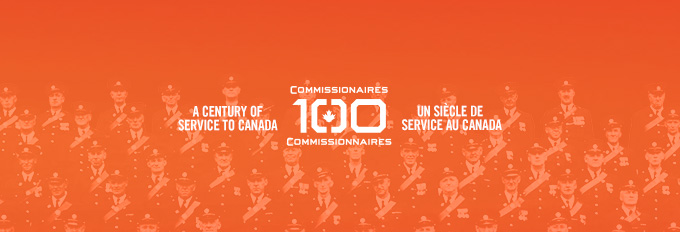![Colonel Jean-Philippe Bonnet’s patio atop the bunker at his seaside home affords an excellent view of the beach at Puys, east of Dieppe. The illustration shows the high cliffs looming over a beach with the tide out. [ILLUSTRATION: JENNIFER MORSE] Colonel Jean-Philippe Bonnet’s patio atop the bunker at his seaside home affords an excellent view of the beach at Puys, east of Dieppe. The illustration shows the high cliffs looming over a beach with the tide out. [ILLUSTRATION: JENNIFER MORSE]](https://legionmagazine.com/wp-content/uploads/2010/12/BattlefieldsLead.jpg)
This August the weather in France is perfect—blue skies for photographs and moody clouds for paintings. I came to Europe to paint.
World-class museums are filled with landscapes of the Norman and Flemish fields. This land is valuable both for its artistic and agricultural production. But it is cherished for another reason.
This is where the world came to fight, not once but twice. More than 111,650 Canadians died as a result of the First and Second World Wars. They are buried here.
As an artist, the juxtaposition of war and peace interests me. I imagine European citizens picnicking with their families on the same shores Canada stormed—busy with modern lives on old battlefields.
I want to see if remembrance exists in the off-season—when no one knows company is coming.
At a table overlooking the Dieppe shore, the waiter, Philippe Bonnet, strikes up a conversation, curious about why I am visiting the seashore. He looks like a Saskatchewan farm boy, a big strawberry blond with rosy cheeks. I tell him I am here to see the sites that are most meaningful to Canadians. Tomorrow I am heading to Puys and then Pourville. “Puys!” he said. “I live in Puys.”
I explain that my task is to paint commemorative sites in Europe. Before leaving Canada I had imagined drawing the bunkers at Puys. I could almost see the soft green vegetation and moss on the concrete, gentling and concealing the hard grey outlines of the German fortifications, a landscape with war hidden in the weeds—a visual metaphor of how time has erased the memory of war. Philippe listened—flabbergasted. “I live in the white house up the steep road to the left of the monument. There are two bunkers on our land. You must come and visit us. I will leave a note for my parents.”
![A couple saunters along a rain-soaked promenade at Arromanches, France. In the distance are the remains of large concrete caissons used in the construction of the Mulberry harbour. [ILLUSTRATION: JENNIFER MORSE] A couple saunters along a rain-soaked promenade at Arromanches, France. In the distance are the remains of large concrete caissons used in the construction of the Mulberry harbour. [ILLUSTRATION: JENNIFER MORSE]](https://legionmagazine.com/wp-content/uploads/2010/12/Battlefields2.jpg)
I keep looking for that which has been forgotten in the French countryside, and instead I seem to be finding remembrance.
It is a six-kilometre drive along the spectacular cliffs of the Dieppe shore to the small village of Puys. There, up an ancient brick and stone stair is the white stucco home of Philippe’s family. His father, Colonel Jean-Philippe Bonnet, defence attaché for the French Embassy in Riyadh, Saudi Arabia, and Manama, Bahrain, is waiting outside in the bright morning sun. He looks to be warming up for an early morning run and his brown eyes and quick smile sparkle in the ocean air. “Come,” he says, as he leads me up on top of one of two concrete bunkers, barely eroded 68 years later. There on the largest, patio furniture is arranged to take in the world-class view of the ocean and cliffs—no railings I might add—and we are at least 80 feet up. His small wife, Véronique, serves us coffee at a picnic table atop the 14-foot-wide square. To sit having coffee on this same bunker where in 1942 German guns mowed down so many Canadians seems to be the best example yet of how these places of war are now places of peace.
![A wreath and 20 maple leaves adorn the memorial in the garden at the Abbaye d’Ardenne. [ILLUSTRATION: JENNIFER MORSE] A wreath and 20 maple leaves adorn the memorial in the garden at the Abbaye d’Ardenne. [ILLUSTRATION: JENNIFER MORSE]](https://legionmagazine.com/wp-content/uploads/2010/12/Battlefields1.jpg)
From Puys it is a 10-kilometre drive west to Pourville, another beach where Canadians came ashore. And what a drive, up and down the cliffs that edge the turquoise channel. French impressionist painter Claude Monet vacationed here and painted the coast in rather wild and garish colour. I do not think he captured the spirit of the place. It is far too serene for such passionate brushwork.
On the main road stands a gorgeous stone chapel edged with pink hydrangea and two gardeners are busy deadheading a bed of red and white begonias in the shape of the Canadian flag. They explain they are preparing for the Aug. 19 commemoration services that will be held along this coast. Lieutenant-Colonel Cecil (Charles) Merritt was awarded the Victoria Cross for his leadership and courage at the bridge a block from here.
The three-hour drive to Caen is wet and cold, but the camera and I are secure under a $3 plastic poncho. Caen is a maze of narrow one-way streets, and seven winding kilometres west of Caen’s centre, the Abbaye d’Ardenne is prominent in a flat field. Eighteen Canadian soldiers were murdered by the Nazis on June 7-8, 1944. Two more are believed to have been executed on June 17. I have been here twice before, both times with a group, and we crowded into the garden for a commemoration ceremony while a guide told the grim story. Today, the rain drums through the leaves of the trees sheltering the memorial garden and I am alone. A chair has been left in front of the monument, a seat for a pilgrim. I pick 20 leaves off the large maple tree and lay them in a row on the stone, one for each soldier. The soft rain and stillness of this place seems light-years from the busy streets of Caen, where for the first time since I left Canada, lessons of war seem to belong to days gone by.
As I drive away from the abbey the day darkens, thunder booms and rain sluices over the windshield. I peer out for road signs as I navigate through the grey landscape toward the coast—it is 35 kilometres to Arromanches.
Before D-Day, two temporary harbours—Mulberries—were built in secrecy in England and then hauled in sections across the English Channel. One was in Arromanches, for the British, and the other at Omaha, for the Americans. They were designed as port facilities to offload the supplies and troops necessary for Operation Overlord after the Normandy landings. On June 19, 1944, a storm destroyed the Mulberry at Omaha, but the British harbour was repaired and remained operational for another 10 months. Two and a half million men, half a million vehicles and four million tons of goods were reported to have flowed through the harbour at Arromanches. I peer out to sea and watch the waves break over the concrete remnants of the harbour barely visible in the downpour, and wonder what it must have been like to offload men and supplies on such a day, with the ocean pounding against the shore. Everywhere is grey.
![Windswept grass and the sands of time surround a crumbling German bunker on Juno Beach. [ILLUSTRATION: JENNIFER MORSE] Windswept grass and the sands of time surround a crumbling German bunker on Juno Beach. [ILLUSTRATION: JENNIFER MORSE]](https://legionmagazine.com/wp-content/uploads/2010/12/Battlefields3.jpg)
Down the coast is Juno Beach. Wet and cold, I crawl out of the car and into the Juno Beach Centre, a small Canadian museum situated on the beach. In the shelter of the foyer, I chat with two guides, both students from Ottawa University. They work here in Courseulles-sur-Mer for four months every summer. Both are keen to talk of home, tell me how much they have learned and how kind the rare veterans that visit are. While the guides and I chat the sky clears and I head out to the beach. The rain has scared off every tourist, so alone I walk in the golden sand, crawl into ‘Cozy’s bunker’ a half kilometre down the beach and then back in bare feet at the sea’s edge. The beach at Dieppe is stony and hard to walk, but here at Juno it is sandy and you can travel farther and faster, much like the respective campaigns.
Bernières-sur-Mer is another beach only a few kilometres east. It is where the Canadians are credited with liberating the first house in Normandy, but the D-Day cost to the unit that accomplished success—the Queen’s Own Rifles—was 143 killed or wounded, more than any other Canadian battalion. Overall on June 6, the Canadians, who advanced further inland than any other Allied force, lost 340 killed, 574 wounded and 47 taken prisoner.
The next morning the rain is unrelenting. I grab a pain et fromage from the corner boulangerie and strike out for Paris, 250 kilometres southeast. This is my last day in Europe, and I walk the slick city streets along the River Seine, but I am still musing over how effortlessly remembrance seems to inhabit the French and Belgium countryside. Half way up the most famous promenade in the world is the Arc de Triomphe. Since 1923, at 6:30 p.m., a veterans group conducts a ceremony to honour the Unknown Soldier entombed under the massive arch. As luck would have it, my wandering takes me there and I am invited with 20 or so others to stand inside the barriers to watch the rather haphazard ceremony.
In broken French, I explain that I am a journalist and could they tell me their names and a little about the ceremony. Two commissionaires, a neat Asian officer and a round blond sporting a beret, take me down a stone stairway into the private underground offices to talk. They explain—in French—slowed down for my benefit—who they are and how the ceremony goes. A French veteran from the Second World War, wearing medals, interrupts every few minutes to ask, “Qui est la madame? (Who is the lady?) Quel pays? (What country?)” Monsieur Garden Akermi, the inquisitive veteran, is the guardian of the flame, the book and the sword. “Ah, Canada.” All three nod at each other. They have me sign the book and then they take off their hats and we leave.
Email the writer at: writer@legionmagazine.com
Email a letter to the editor at: letters@legionmagazine.com
Advertisement


















